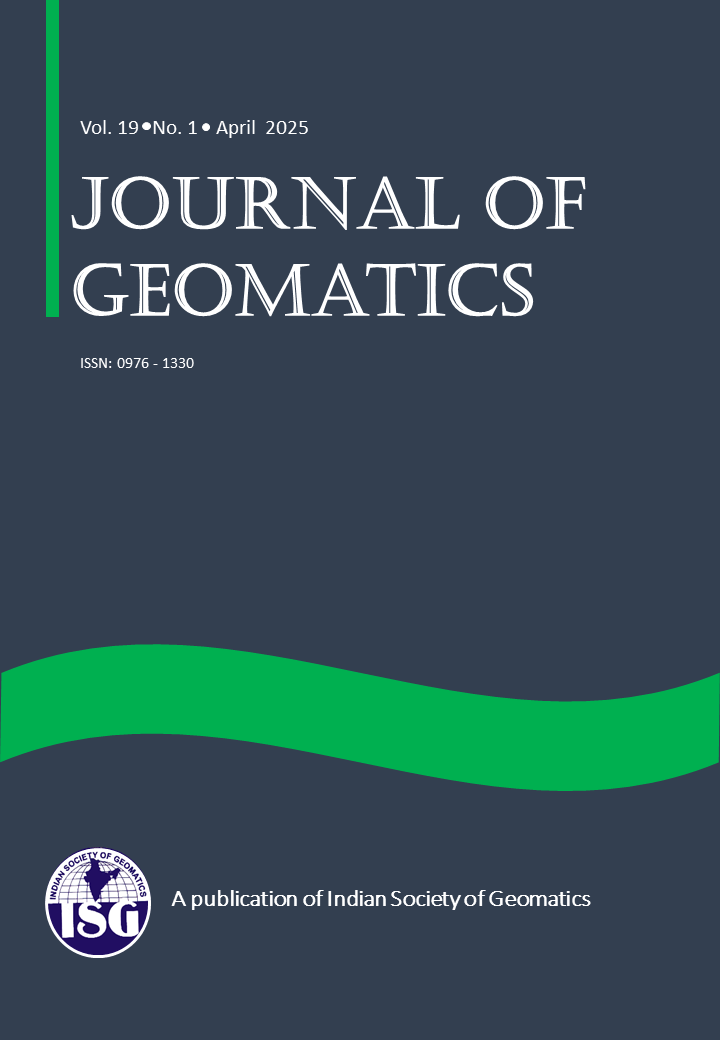About the Journal
The “Journal of Geomatics” (JoG) (ISSN:0976–1330) is a peer reviewed journal which covers all aspects of Geomatics – geodata acquisition, pre-processing, processing, analysis and publishing. Broadly this implies inclusion of areas like GIS, GPS, photogrammetry, cartography, remote sensing, surveying, spatial data infrastructure and technology including hardware, software, algorithms and modelling. It endeavours to provide an international forum for rapid publication of developments in the field – both in technology and applications. The first issue was published in April 2007 and since then the journal is published bi-annually (April and October). However, depending on the response and interest, frequency of publication may be increased.
The international Advisory Board comprises of very renowned and experienced international personalities. The Editorial Board comprises experts in the field of Geomatics from India and abroad.
Current Issue

It gives us immense pleasure to present Volume 19, No. 1, April 2025 Issue of Journal of Geomatics from Indian Society of Geomatics. The current issue presents the articles on cutting-edge studies leveraging geospatial technologies, remote sensing, artificial intelligence, and data science to address some of the most critical environmental, infrastructural, and ecological challenges. The featured articles demonstrate the versatility and transformative potential of these technologies in domains ranging from watershed prioritization and land surface temperature modeling to lightning prediction and species conservation.
This edition highlights the increasing relevance of morphometric analysis in watershed management, the growing role of deep learning in road and farm pond monitoring and the innovative use of AI to fill gaps in historical night-time light datasets observed from space. The significance of early warning systems for lightning events is highlighted through interesting studies which exemplify how satellite-derived data and AI-enhanced models can offer predictive insights critical to saving lives during lightning events. Urban planning and traffic monitoring are further refined through UAV-based object detection, while habitat mapping and ecological forecasting are advanced via MaxEnt and camera trap techniques are also presented in this issue. At a broader scale, the study of land surface phenology calls for higher-resolution data and ground validation to improve our understanding of ecosystem dynamics in the context of climate change.
We hope that the insights and methodologies presented in this issue will inspire further research and informed decision-making to support sustainable development, environmental protection, and societal resilience.
We thank all the authors and contributors for their valuable work and look forward to continued knowledge sharing in geospatial technologies and its applications for sustainable development.
— Editorial Team


